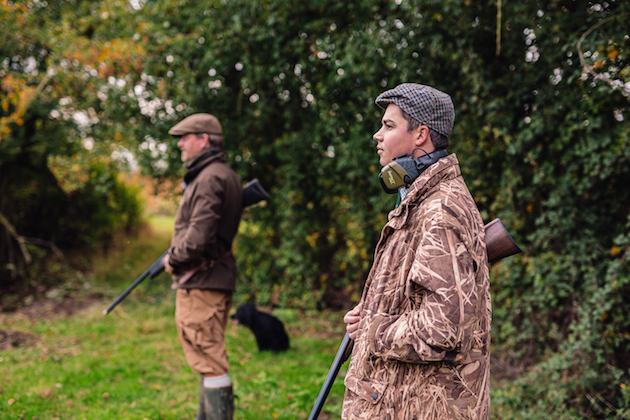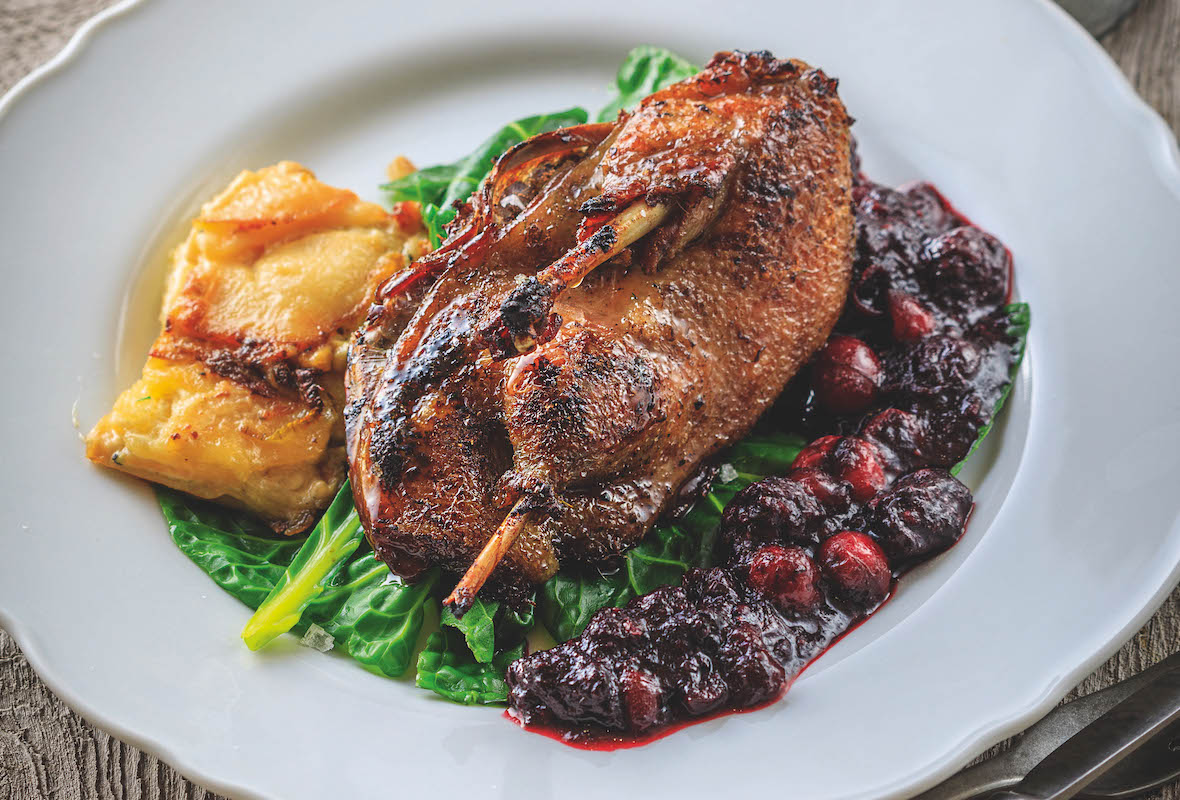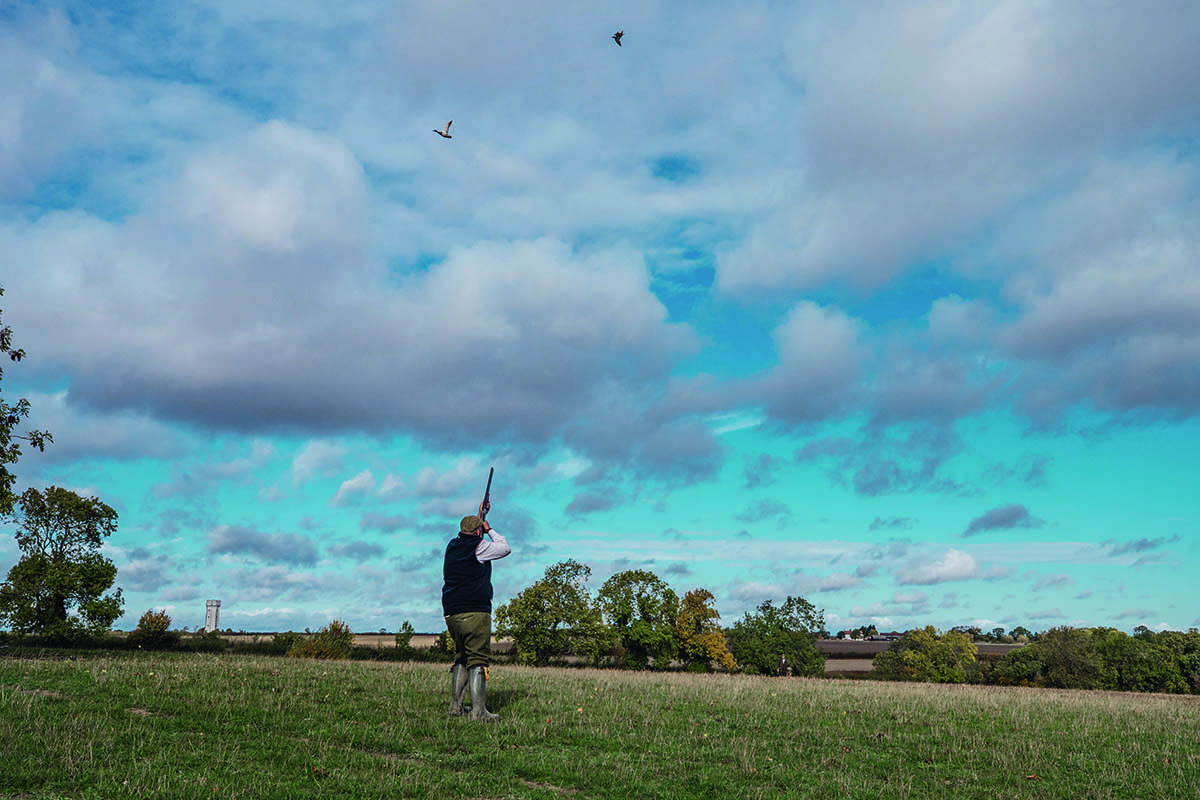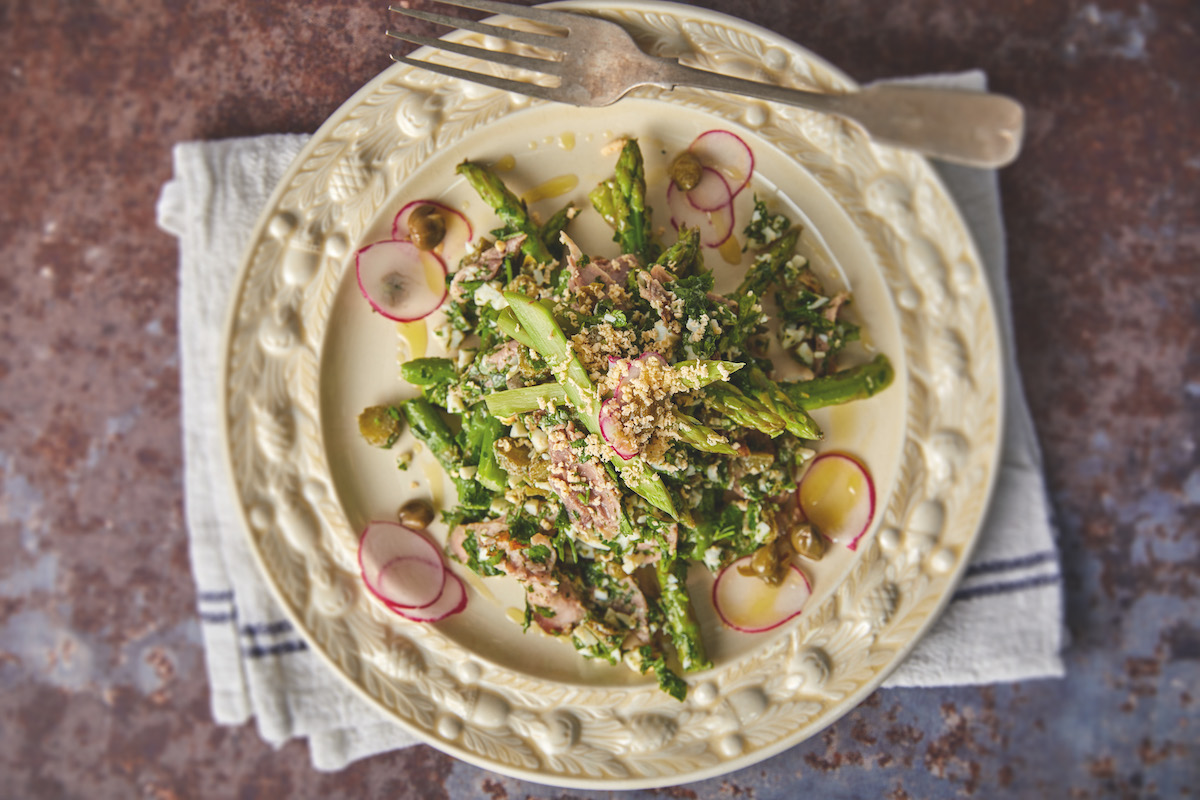Duck-flighting and dining with a Masterchef semi-finalist
Richard Negus goes shooting with a MasterChef semi-finalist who dishes up the best pigeon dish Richard has ever tasted

Richard Negas goes shooting with Freddie Innes, MasterChef semi-finalist
Freddie Innes is a man who, like the majority who shoot, clearly shares a love of good food. At 26, Freddie is a young chef, yet he already boasts an impressive CV, hard won in some of the finest professional kitchens in the UK.
A MasterChef semi-finalist
This passion for food started from the cradle. His grandfather was Raymond Budgen, headkeeper at the Paddockhurst estate in West Sussex. It was he who instilled the passion for, and the importance of, the raw ingredient. Mr Budgen reared his own birds in the traditional manner and felt he held a closer affinity with his stock — nurturing them from egg, to release pen, to cover, to game cart. He drilled this ethos into the young Innes, not only with game but all ingredients in a dish. “My grandfather used to get very passionate,” recalled Freddie. “He’d say, if you grow your own carrots, you put a lot of yourself into them. After you harvest them you wouldn’t just boil them up any old how because these aren’t any old carrots, these are your carrots. They deserve to be treated with the same thought as the meat on your plate.”
Freddie is about to embark upon his first head chef’s role at The Plough at Ivy Hatch near Sevenoaks. The Kentish pub-restaurant is due to reopen in a few weeks after a lengthy refurbishment. The emphasis for the food served there will be seasonal and local. Game will be an important ingredient on the menu.
An evening’s duck flighting
I invited Freddie to visit me in Suffolk for an evening’s duck flighting. We hid against a hedge and as the last smear of gold lit the sky, the mallard came in profusion. Borrowing a gun — my beloved AYA No3 — Freddie managed, after a few comfortable misses, to bag himself one of our Flea Barn Scud missiles. I kept Mabel busy searching for the pair I accounted for. We hurriedly picked up our duck and empty cases before scurrying back to my truck to hit the road.
The MasterChef semi-finalist 2019 was cooking the Negus family supper. Game becomes a major part of our family diet once the season is under way. However, I fear when it is my turn to cook I become something of a one-trick pony. Being a righteous game eater can get somewhat tiresome if your daily feed boils down to tucking into yet another pheasant or partridge hauled out from the slow cooker.
One of the things that has always fascinated me about professional chefs is the speed with which they turn raw ingredients into delicious delights. I asked Freddie to teach me how to do this. I was also keen to use straightforward ingredients, the sort of thing the Shooting Times reader will have in his or her fridge.
Thus I handed the young chef a trio of pigeon breasts on the crown. They had been in my fridge for two days and the flesh had taken on the delicious colour of a fine old gout-inducing port.

Freddie seasoned the pigeon well
Seasoning
The first trick I learned was that I had been under-seasoning my food. The pigeon was treated to a very generous dose of salt and pepper, then seared on the hob in olive oil for a few minutes before going in to roast in the oven for a further three minutes.
Next the veg made its appearance, and this is where the professional chef comes into his own. Back in the restaurant kitchen Freddie had made large batches of a delicious seasonal roasted root vegetable mash, spiced with star anise and a similarly copious amount of spiced red cabbage. He splits these up into smaller amounts, vacuum-packs them and freezes them to use as required. He also brought with him some blanched string beans wrapped in smoked streaky bacon that, after a generous seasoning and searing, joined the pigeon breasts as they rested from their roasting. Finally the hearty sauce, which again was prepared in a large batch then frozen.

The best pigeon dish ever tasted
Best pigeon dish
All that was needed was for these vegetable delights to be reheated, the pigeon carved and served on some wilted spinach. After a mere 15 minutes of cooking, my wife, son and I sat down to eat the best pigeon dish I have ever tasted.
Over a purely digestif glass of rioja, I asked Freddie if he believes that professional chefs cooking with game will encourage their customers to go home and try cooking it for themselves. “I don’t think so. You go out to eat as a treat, not to take notes,” he pointed out. “Most people shop in supermarkets and game is rarely found there, plus people buy food that they know is easy to cook and cheap. A chicken costs less than a fiver.” I therefore wondered if we are fighting a losing battle in trying to promote game to a non-shooting public.
“As a restaurant dish, game works, pigeon is trusted, as is venison,” said Freddie. “Pheasant and partridge are a bit more challenging. “I have had people ring up to ask if there will be beef or chicken on the menu when they come; I tell them no because game is in season at the moment. My cooking is about flavour and game gives me lots of that.”
So how should we be marketing game if mass market was not the way forward, I asked. “Those of us who shoot should be eating more game — we already know it tastes good.”
Freddie’s flying visit got me thinking. First, I decided to order a vacuum-packing machine. It seems such a useful tool, enabling even the home cook to buy, batch cook and freeze sauces and seasonal vegetables, which can be reheated. More importantly, while his words on Guns eating more game may not be what I wanted to hear, they rang true.
If there are, as we are told, 50 million pheasants and partridges released in the UK each year and shoots average a 40% return, that means roughly 20 million birds are entering the food chain. There are 600,000 people shooting in the UK, so Guns need only eat 33 pheasants or partridges per household throughout the season — less than a bird a week. Freddie proved how simple delicious game cooking can be.
Which begs the question, if we are so keen on shooting it, why aren’t we eating it?








